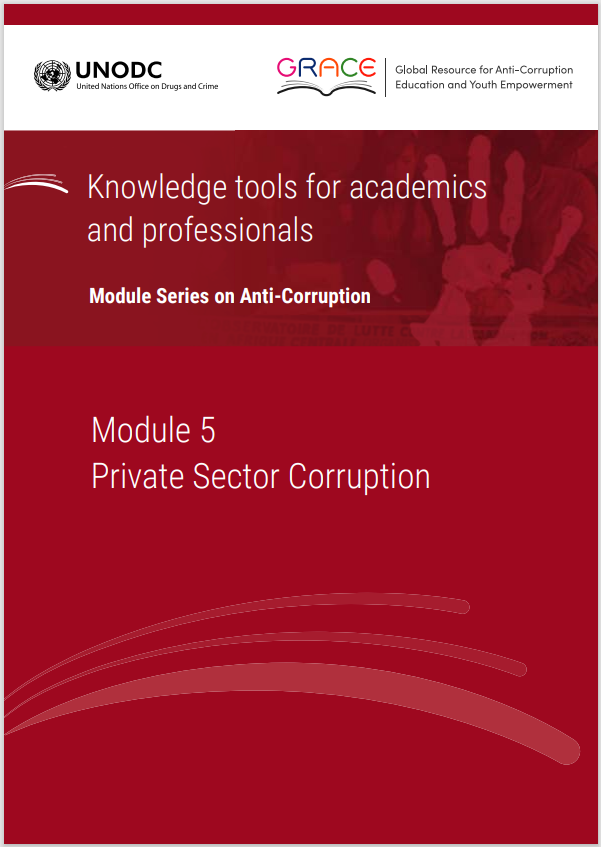This module is a resource for lecturers
Possible class structure
This section contains recommendations for a teaching sequence and timing intended to achieve learning outcomes through a three-hour class. The lecturer may wish to disregard or shorten some of the segments below in order to give more time to other elements, including introduction, icebreakers, conclusion or short breaks. The structure could also be adapted for shorter or longer classes, given that the class durations vary across countries.
Introduction (10 minutes)
- Discuss the objectives, learning outcomes and teaching methodology of the class.
Overview of private sector corruption (60 minutes)
- Describe the differences between public and private sector corruption as well as the forms, manifestations and causes of private sector corruption.
- Discuss with the students why is important to fight private sector corruption and emphasize on its consequences for the business environment. The lecturer is encouraged to use interactive methods such as Q&A and short presentations.
- Conduct Exercise 1.
How to address private sector corruption? (50 minutes)
- Present the various means to respond to private sector corruption such as corporate liability, suspension and debarment, etc.
- Discuss the shift from legal to behavioural approaches to address private sector corruption and provide an overview of different preventive approaches including ethics and compliance programmes, risk assessment methods and business partners due diligence.
- Conduct Exercise 2, 3 or 4 (if time allows, the lecturer may wish to conduct more than one exercise during this part of the class)
Collective action and public-private partnerships (50 minutes)
- Discuss the need of collective actions to fight corruption and provide the students with practical examples of collective action initiatives of companies in different sectors and countries.
- Conduct Exercise 5.
Conclusion (10 minutes)
- Wrap up the main ideas which emanated from the Module, send the students home with a question to continue thinking about. An example is: What are the most destructive aspects of private sector corruption in your country or region, and what is the best way to deal with them?
 Next:
Core reading
Next:
Core reading
 Back to top
Back to top
